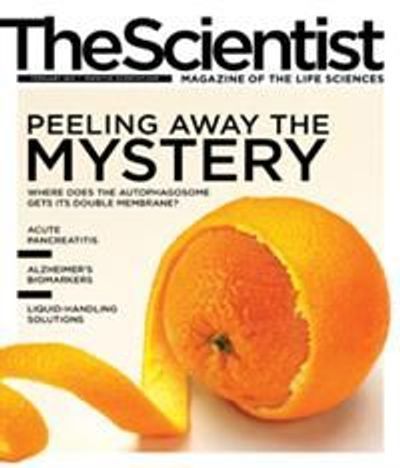Carrigan realized that her student was in the military. The online course included portable laboratory experiments that allowed students to work entirely from home—or anywhere else, for that matter. When Carrigan contacted her student to follow up on the report, she learned he was stationed in...
Such remote training is particularly well suited to the military, in which soldiers experience “seconds of absolute terror followed by weeks of absolute boredom,” says microbiologist Jim Brown of Ocean County College in New Jersey, who has been teaching online courses for more than 10 years and began incorporating portable lab kits in 2005. “These courses really fit that niche.”
“It’s different, the excuses why they can’t get their work done. It’s not ‘My dog ate my homework’; it’s more ‘My Humvee was just hit with a missile, and there was my laptop in the back.’”
—Jim Brown, Ocean County College
Indeed, Internet-enabled learning seems to be a mounting trend in the military, adds Brown, who also teaches for the online-only American Military University and has personally worked with more than 100 students in the armed services. “As they’re getting ready to come home, so many of them have really turned to online courses,” he says. “They’re getting an education out in the field when they’re deployed that they could never get before.”
While online courses have been available since shortly after the rise of the Internet, for such courses to serve as a reputable substitute for college science classes they have to offer a lab component, Brown says. But thanks to the growing availability and increasing sophistication of remote lab kits over the last decade, that’s now becoming possible.
Today, the kits, provided by companies such as Hands-On Labs and eScience Labs, run the gamut from earth science to anatomy and physiology to chemistry and even cell biology, molecular biology, and microbiology. Students can be supplied with a colorimeter-based lab from Hands-On Labs, for example, that allows them to measure the concentrations of phosphate in water and of food dyes in commercial drinks. The kit, called a LabPaq, comes with a 9V battery-powered LED light box for measuring light absorption. After creating a calibration curve using samples of known concentration, students test the concentrations of substances in unknown samples. There is also a lab kit that provides students with materials to pour their own agarose gel, normally used to separate out DNA snippets cut by restriction enzymes. At home, students use the gel to separate food dyes—which are both safe and affordable, and run across the gel the same way DNA does—using only 9V batteries and paper clips. A complete set of labs containing experiments for an entire semester costs an average of $200, depending on the labs included.

In addition to the increasing number of available experiments, the techniques are also improving, says Peter Jeschofnig, cofounder and vice president for research and development at Hands-On Labs. Their titration labs, for example, used to involve counting the number of drops that came out of a simple plastic pipette, he says. “Now we have converted to a syringe with a stopcock. So it has become very much more quantitative.”
The flexibility of being able to take the courses anywhere with Internet access and to perform the lab experiments whenever one has free time has attracted a wide range of students, Brown says. When Ocean County College offered its first online science lab course in 2005, the response was enormous, he says. “It opened up science for us. Before we knew it we were getting students from Alaska asking if they could take our anatomy and physiology courses”—and by 2007, biology and microbiology as well. But of all the students the program attracts, Brown particularly likes working with those in the military. “They’re very eager to learn; they’re very disciplined,” he says.
Of course, war zones are not the safest places to earn degrees. “It’s different, the excuses why they can’t get their work done. It’s not ‘My dog ate my homework’; it’s more ‘My Humvee was just hit with a missile, and there was my laptop in the back,’ ” says Brown, who has even lost a student to the war. “It’s a whole different world.”
Interested in reading more?





